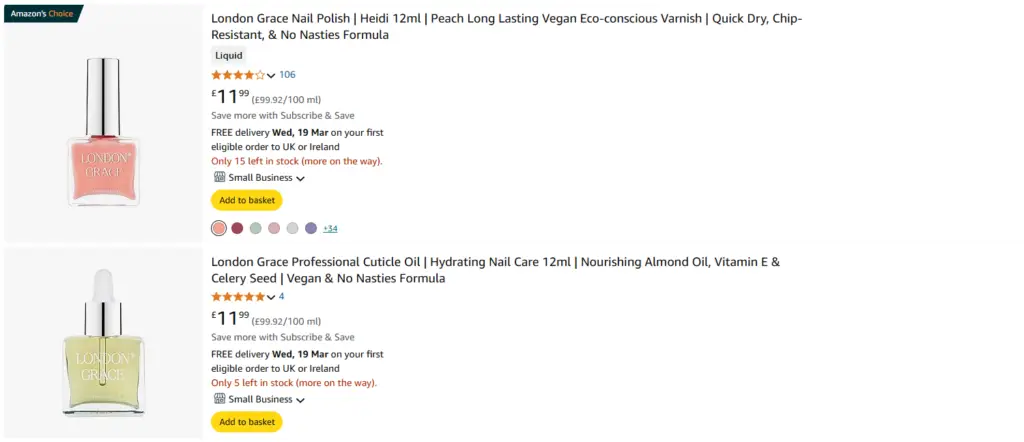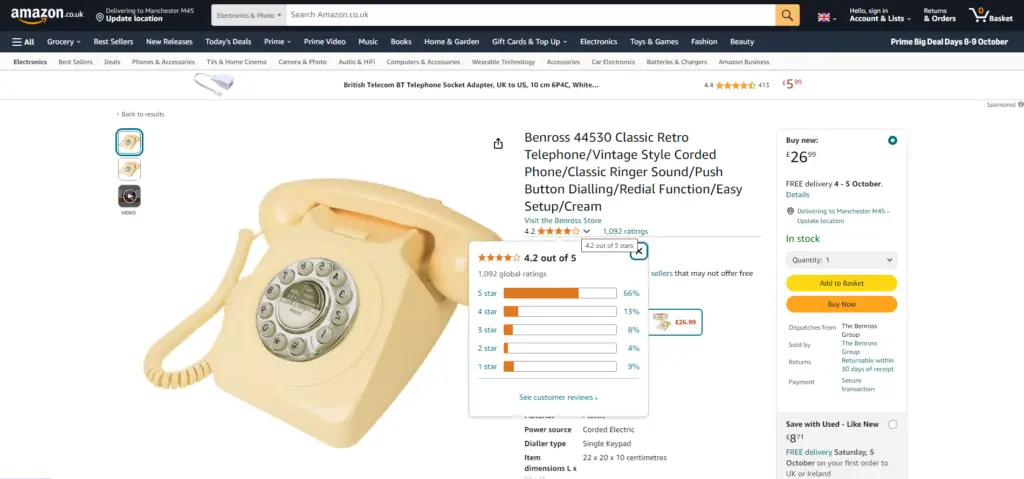Selling on Amazon is becoming more complicated as the ecommerce industry evolves. It is more important than ever to fully understand and become an expert in Amazon Search Engine Optimization (SEO) in 2025, as millions of sellers compete for visibility.
Regardless of your level of experience, being able to optimize your product listings for Amazon’s search algorithm will help you remain ahead of the competition and increase sales.
We’ll look at the newest Amazon SEO strategies in this guide to help your products rank better and draw in more customers.
What is Amazon SEO?
SEO on Amazon is the technique of improving product listings to appear higher in Amazon’s search results. Amazon SEO focuses on relevance and conversion potential above Google SEO, which takes into factor backlinks and content variety.
Simply put: when customers look for related products, your listing will rank higher if it is optimized.
The A9 (or A10) search engine from Amazon uses an algorithm that ranks listings based on customer engagement, product and seller performance, and keywords.
Sellers who want to be successful must understand the factors that affect Amazon’s ranking system and put a strong Amazon SEO strategy into action.
Key Amazon SEO Strategies for 2025
Understanding Keyword Optimization
The foundation of any Amazon SEO approach continues to be keywords. But keyword trends change, so it’s important to stay current.
To successfully optimize your listings, follow these steps:
- Target Long-Tail Keywords – Customers are becoming more particular in their searches. Rather than focusing on general terms like “wireless earbuds,” think about “noise-canceling wireless earbuds for travel”
- Leverage Backend Search Terms – To increase discoverability, you can use backend search phrases. Make use of similar terms, synonyms, and alternative spellings
- Analyze Competitor Keywords – You can find out which keywords your competitors are ranking for by using tools such as Helium 10, Jungle Scout, and Scale Insights
- Optimize for Voice Search – As Alexa and other voice assistants become more popular, make sure your website is optimized for voice search by adding conversational terms like “best waterproof hiking backpack”
Creating Effective Product Titles
One of the most important aspects of Amazon SEO is the title of your product. The title is the first thing Amazon indexes and one of the most weighted factors for search ranking. Amazon loves titles that are appropriately formatted, clear, and packed with relevant keywords.
The following are the most effective methods:
- Keep It Concise – Amazon advises avoiding titles with more than 200 characters. Titles that are clearer and shorter tend to generate better results and also look better on handheld devices
- Prioritize Keywords – To improve visibility, use the most important keywords at the front of your title
- Avoid Keyword Stuffing – Don’t overuse keywords. Clicks are encouraged by an informative, organic title
- Follow Category-Specific Guidelines – Title requirements vary per category. Always follow Amazon’s guidelines
Example of a well-optimized title: “London Grace Nail Polish | Heidi 12ml | Peach Long Lasting Vegan Eco-conscious Varnish | Quick Dry, Chip-Resistant, & No Nasties Formula”

Improving Bullet Points and Product Descriptions
Listings that offer detailed, interesting, and informative content are rewarded by Amazon. Here’s how to make your bullet points and descriptions stand out:
- Highlight Key Features & Benefits – Focus on important attributes and advantages that matter most to buyers with your bullet points. Make them informative and easy to understand
- Solve Customer Pain Points – Explain to customers how your product helps them to address their problems
- Showcase Unique Selling Points (USPs) – Highlight your product’s unique selling points: What sets it apart? Emphasize those differences
- Use Keywords Naturally – Use appropriate keywords without making the text feel forced or robotic. Naturally incorporate high-ranking keywords
Leveraging A+ Content and Enhanced Brand Content
Amazon’s A+ Content (for Brand Registered sellers) allows you to add enhanced visuals, comparison charts, and detailed brand storytelling.
This helps improve conversion rates and provides a better shopping experience. High conversion rates signal Amazon to improve ranking as it demonstrates high relevancy to the shopper.
Here are our key tips to maximise this feature:
- Use High-Quality Images and Infographics to showcase product features
- Create Comparison Charts to differentiate your product from competitors
- Highlight Brand Story to build customer trust and loyalty
Optimizing Product Images and Videos
Click-Through Rate, Conversion rates and dwell time can be greatly impacted by high-quality photos and videos. Professional, eye-catching images are preferred by Amazon for listings.
Best Practices:
- Use a minimum of six images, including lifestyle shots, close-ups, dimensions, and different angles
- Use infographics to graphically highlight important elements
- Include product videos to give buyers a clear understanding of the product, and help them visualise your product in use. Videos help to increase engagement and reduce return rates
Get More Ratings and Reviews

- Send automatic review requests by using Amazon’s “Request a Review” button
- Sign up for the Vine Program, which assists new goods in obtaining early, reliable reviews
- Address inquiries and problems promptly to promote positive reviews
Note: Amazon has strong rules against reviews that are influenced by incentives. Make sure you always stick to legal review procedures
Click-Through Rate (CTR) and Conversion Rate Optimization (CRO)
- Make sure your main image is clear, well-lit, and of excellent quality
- Keep an eye on what your competitors are charging and make any necessary changes
- Make sure that all of the listing’s details are correct and engaging
- Amazon gives preference to items that qualify for Prime
Making Use of Amazon PPC to Increase Organic Rankings
Paid ads can support organic SEO. Amazon Pay-Per-Click (PPC) advertising helps increase organic rankings by driving traffic, improving sales velocity, and increasing product visibility through targeting highly relevant keywords & audiences.
Here are some helpful tips for your PPC strategy:
- Improve your manual campaigns after using automatic targeting to identify high-converting keywords
- Invest in the keywords that generate the sales efficiently by placing a bid on high-performing keywords
- To maximize return on investment, modify bids and eliminate underperforming keywords
- Have different ACoS tolerance with different tactics across the customer journey to maximise growth potential
Optimizing Amazon Listings for Mobile
Making your listing mobile-friendly is essential since more customers are now surfing on mobile devices.
- Long titles are shortened on mobile screens, so keep them simple
- Prioritize your bullet points so that the most crucial information appears in the first two
- Make sure that images load quickly by compressing them without sacrificing quality
Next steps
Amazon SEO in 2025 is more competitive than ever before, but with the correct methods, sellers can achieve higher ranks and sales.
Staying ahead of the competition can be achieved by concentrating on keyword optimization, producing high-quality images and product descriptions, and using Amazon’s resources, such as A+ Content and PPC campaigns.
Want to dive deeper into advanced strategies? Check out our content optimization service. If you need expert guidance on improving your Amazon listings, contact us today!


